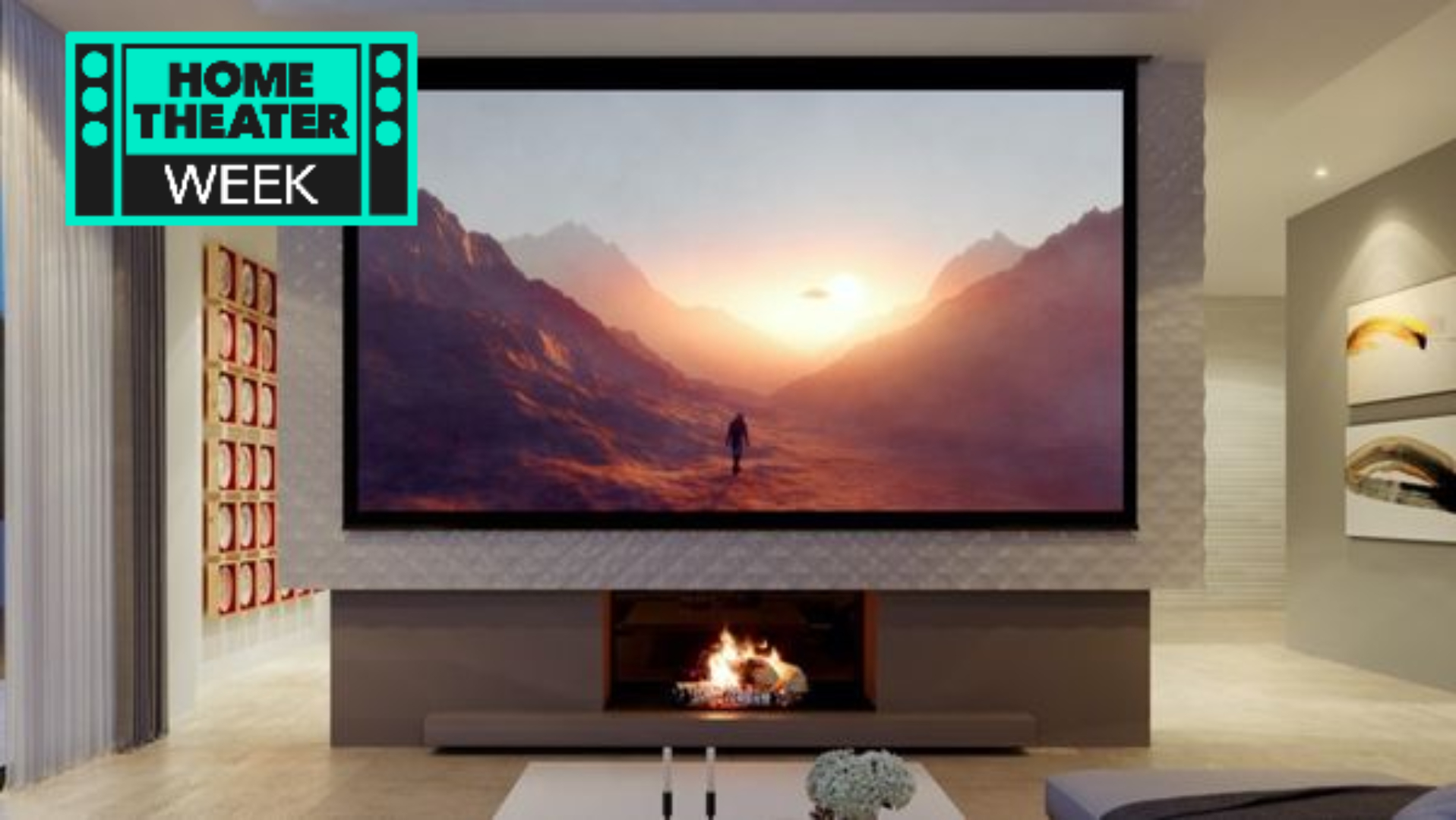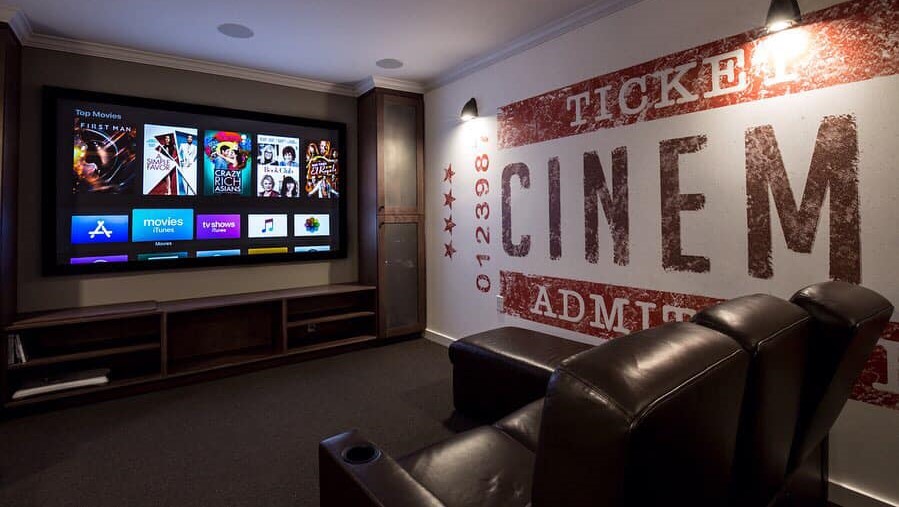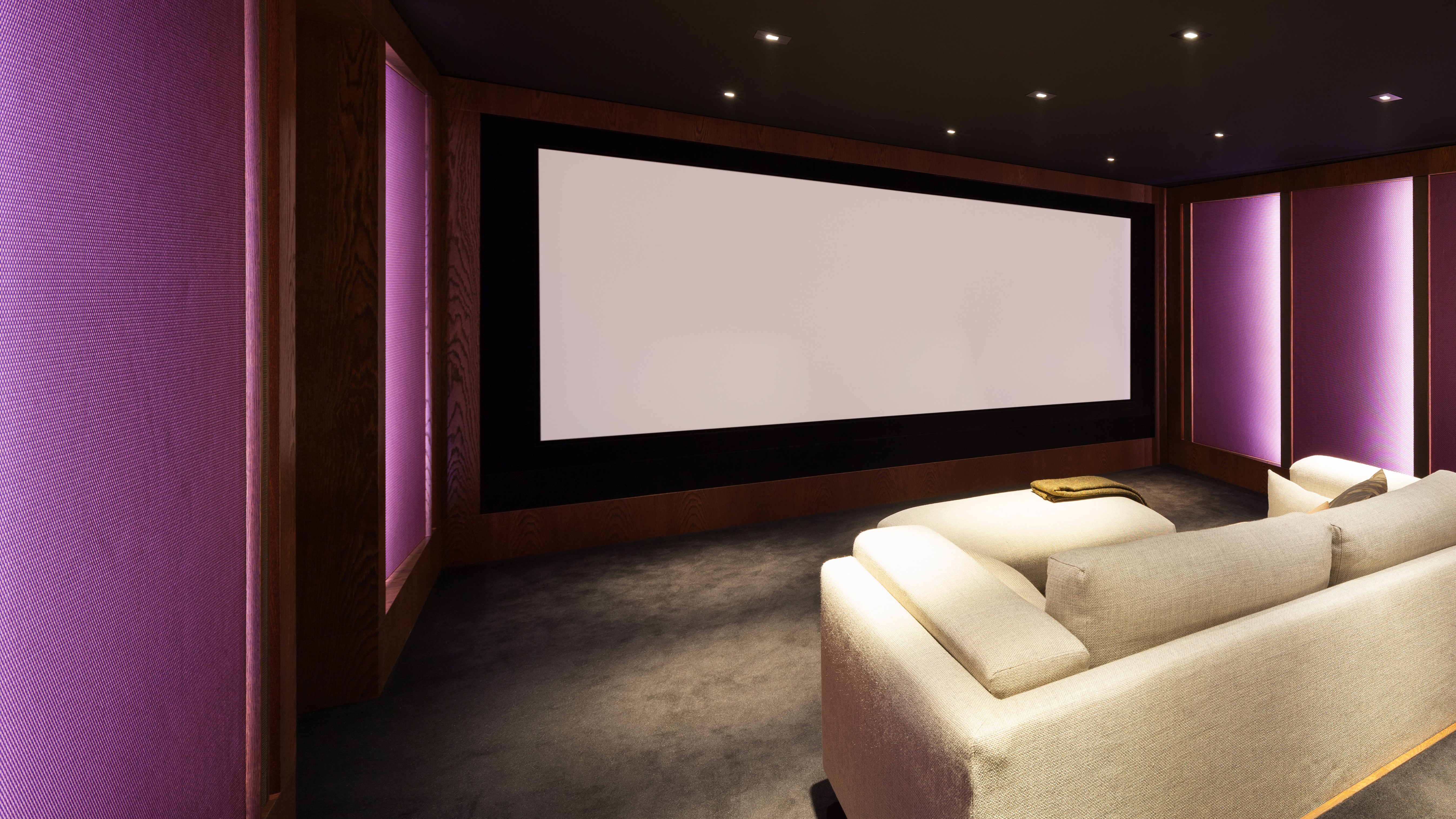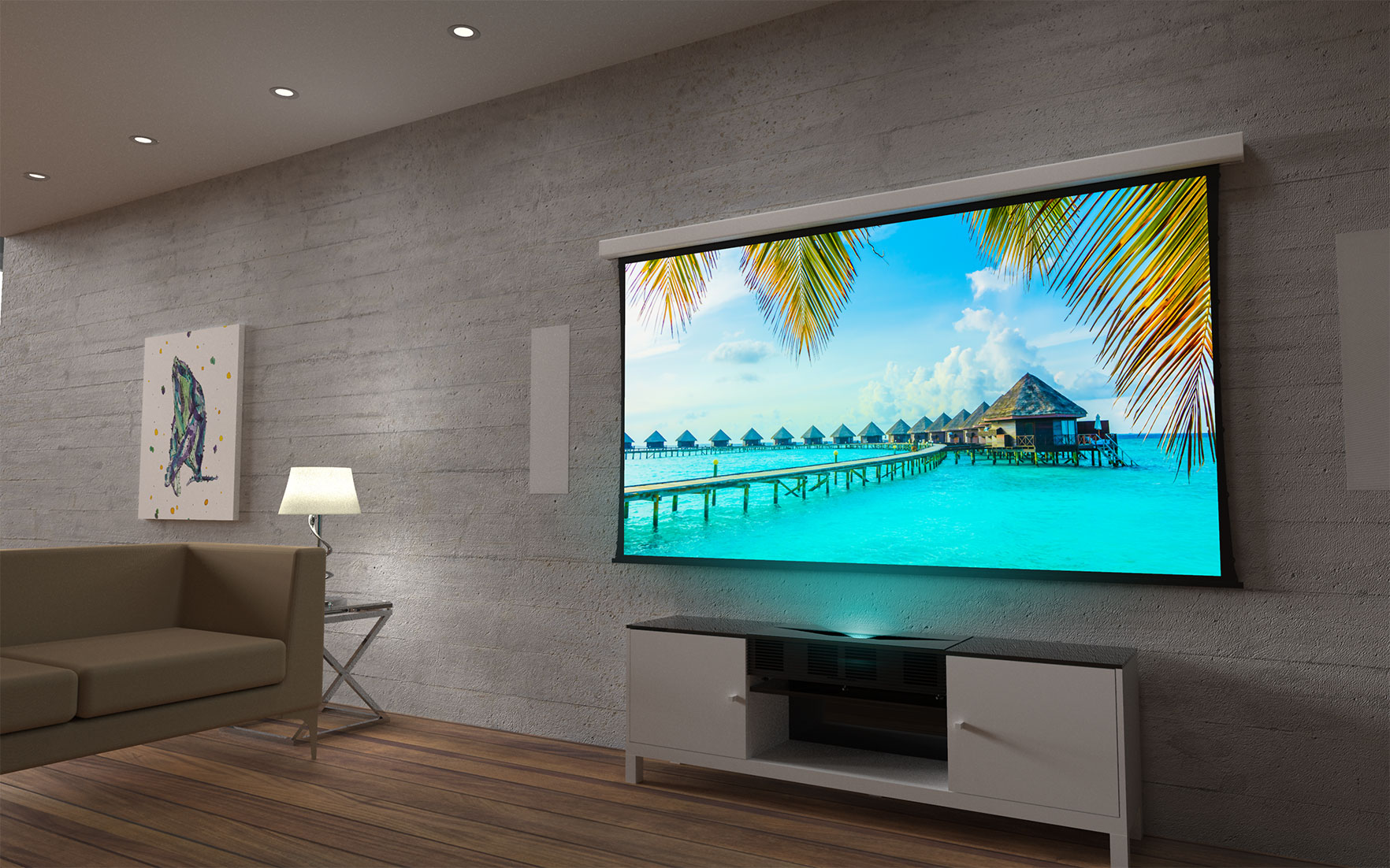Here are the five things to consider when shopping for a projector screen
Screen shop with confidence

A projector screen is crucial for getting optimal performance from the best 4K projectors. When shopping for a screen, however, you are likely to discover that there’s an almost bewildering array of options and that they’re accompanied by an equally bewildering array of terms like fixed frame, ambient light rejecting, acoustically transparent… the list goes on.
So you’ve decided to buy a projector and also decided you want a screen to go with it. But you’d prefer to cut through the jargon and that’s what this screen overview is going to help with by explaining key terms to look for when shopping. Along with that, it will discuss important screen considerations and list them in an order that will help guide you in your search for a screen type best suits your needs.
1. Screen size vs distance
With a 4K projector, the size of the screen you pair with will be less of an issue than with an HD (1080p or 720p) resolution model. That’s because 4K images have an extremely fine resolution, so you can even use a 120-inch screen and view it from an 11-foot distance without seeing any distracting pixel structure.
Ultimately, the size of the screen you choose should be based on two considerations: a) available wall area and b) seating distance. Using one of the many screen size calculators floating around on the internet is a good place to start with in determining an optimal screen size based on your seating distance.
A good, basic one can be found on the website of screen manufacturer Screen Innovations, which provides a screen size recommendation based on seating distance and screen aspect ratio (for example, 16:9). A more detailed calculator can be found on the website of US-based AV dealer Audio Advice. This one lets you select from a list of projector models and it includes options for screen bottom edge to floor distance, ceiling height and screen border width.

2. Fixed frame or retractable?
A fixed frame screen is exactly that – a screen that remains fixed on your wall much the same as a wall-mounted TV. Fixed screens are generally the least expensive screen option, though you have to be okay with having a giant blank rectangle occupying your wall when the screen is not in use. Fixed frame screens come with a variety of screen border options, from an 'edge free' design that mimics the look of high-end OLED TVs to thicker versions that are typically covered in a light-absorbing black velvet fabric.
A retractable screen is also exactly what its name implies – a screen that retracts into a metal casing typically mounted on the wall or either on or in the ceiling when not in use. Retractable screens are pricier than fixed frame ones, but their ability to disappear when you turn off your projector provides a more living room-friendly option. There are both manual and motorized versions available, with the latter powered by an electrical connection or a built-in rechargeable battery.
Sign up for breaking news, reviews, opinion, top tech deals, and more.

3. Which aspect ratio?
A screen’s aspect ratio is the ratio between its width and height. The most common TV and projector screen aspect ratio is 16:9 (or 1.78:1). This corresponds exactly to width and height of HDTV standard broadcasts, and it’s also a common aspect ratio for console games.
While a 16:9 HDTV program will exactly fill up a 16:9 screen, movies are produced in a range of aspect ratios, most typically 1.85:1, and 2.40:1. When watching movies in those formats on a 16:9 screen, you’ll get black bars at the top and bottom of the screen (or at the left and right sides when watching movies shot in the 1.66:1 aspect ratio).
Most viewers are fine viewing movies with these black “letterboxed” bars on their 16:9 screen. Some projector setups, however, provide innovative ways to get rid of black bars in ultra-wide movies. In these cases, a 2,35:1 or 2.40:1 aspect ratio screen is used and the projector’s optical system formats images to eliminate black bars and completely fill the ultrawide screen. Another method is to use a 2,35:1 or 2.40:1 aspect ratio screen with a masking system that changes the screen area based on the content being viewed, though that option is by far the most expensive of the lot.
4. Which screen gain?
One term you’ll encounter when projector screen shopping is gain. Here’s what you need to know about this simple spec. A screen with a gain of 1.0 is evenly reflecting back all of the light being beamed at it from the projector, while a screen with a higher gain spec such as 1.5 is narrowing the range of the reflected light to increase brightness.
While extra brightness is always better in a projection setup, a potential downside to using a high gain screen is 'hot-spotting', an effect where a particular section of the screen looks brighter than others. Another is a loss of picture brightness when viewing at off-center seats. Generally, screen material with a gain in the 1.1-1.5 range is a safe bet for hot-spot-free viewing, and if your screen size is properly aligned with your viewing distance, it’s also unlikely that you’ll be viewing from far off-center.

5. Ambient light rejecting and ultra short throw options
Some viewers may want to get the big screen benefit that a projector delivers, but would prefer not to watch in the pitch black environment that hardcore movie fans prefer. For such folks, an ambient light rejecting (ALR) screen can provide a solution that will let them view with a projector in a room with a medium degree of ambient light coming from windows or lamps.
In contrast to a regular 'matte white' screen such as the 1.0 - 1.5 gain examples described above, an ALR screen has a gray-toned material that serves to enhance picture contrast in medium-bright viewing environments. ALR screens also have an optical structure that reflects light beamed at it from a projector positioned directly in front while absorbing the light hitting it from other angles.
Ultra short throw screens are a variation on ALR screens designed specifically for the best ultra short throw projectors. In this case, the screen’s coating has a ridged structure that reflects light coming from an ultra short throw projector positioned directly below the screen back toward the viewer while filtering out light coming from overhead sources.
One thing to note: ALR screens used with both conventional long throw and ultra short throw projectors aren’t a miracle cure – you’ll always get best picture performance when viewing with a projector in a dark room – but they do offer a good compromise for casual TV viewing or gaming.
You might also like

Al Griffin has been writing about and reviewing A/V tech since the days LaserDiscs roamed the earth, and was previously the editor of Sound & Vision magazine.
When not reviewing the latest and greatest gear or watching movies at home, he can usually be found out and about on a bike.